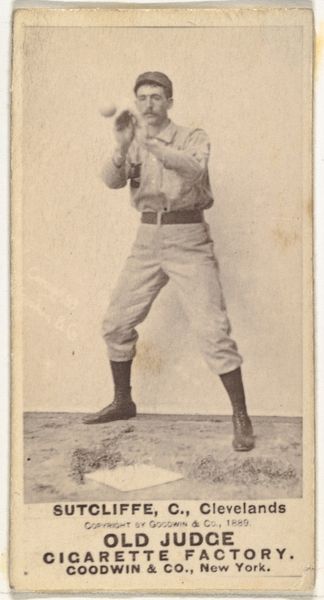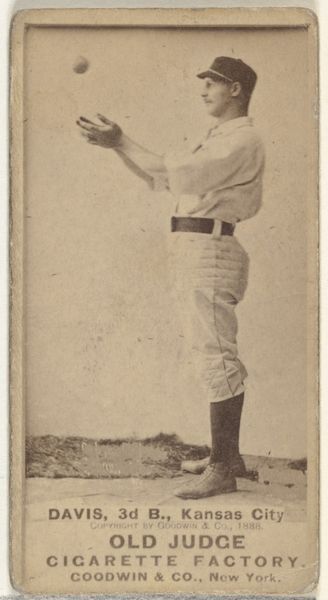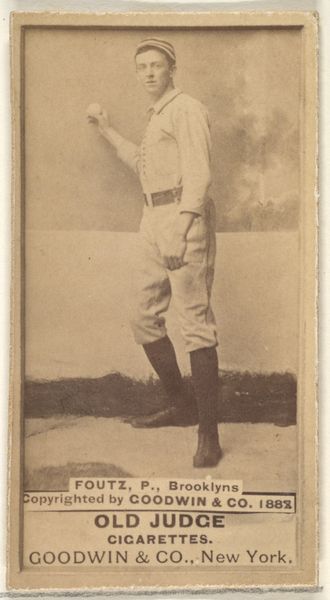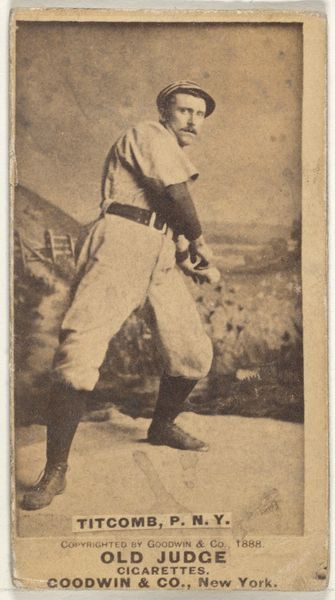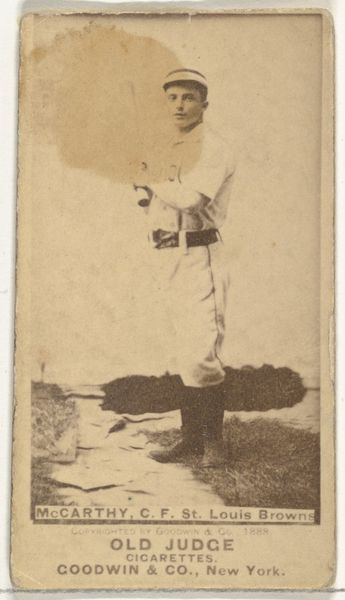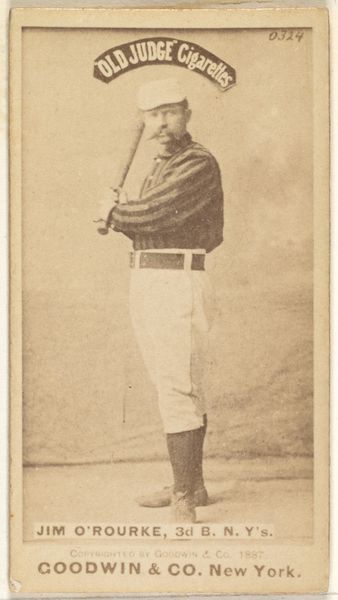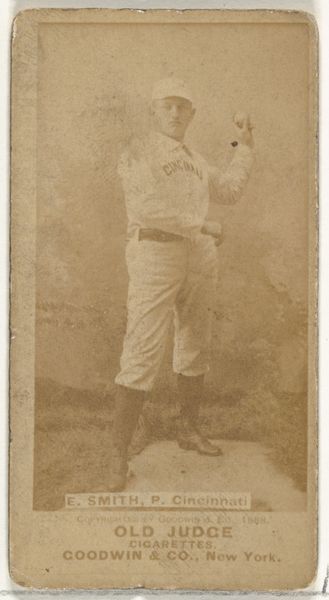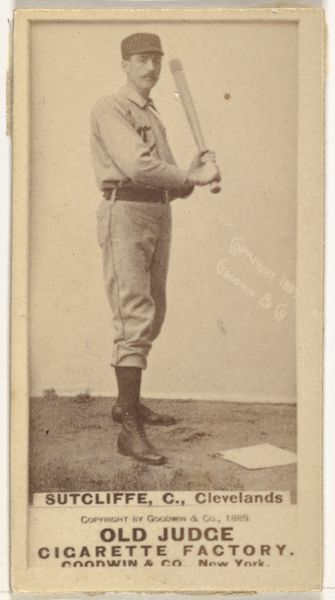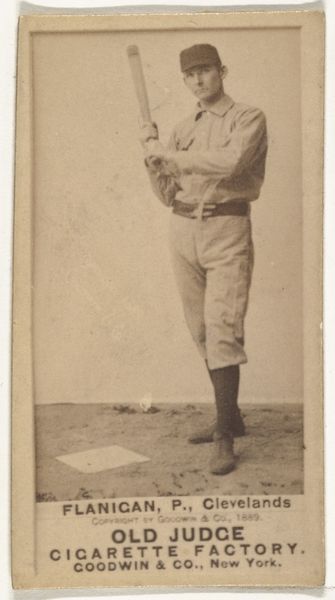
John F. "Cinders" O'Brien, Pitcher, Cleveland, from the Old Judge series (N172) for Old Judge Cigarettes 1889
0:00
0:00
drawing, print, c-print, photography, gelatin-silver-print
#
portrait
#
drawing
# print
#
impressionism
#
c-print
#
baseball
#
photography
#
gelatin-silver-print
#
men
#
athlete
Dimensions: sheet: 2 11/16 x 1 3/8 in. (6.9 x 3.5 cm)
Copyright: Public Domain
Curator: Here we have "John F. 'Cinders' O'Brien, Pitcher, Cleveland," a baseball card produced by Goodwin & Company in 1889 as part of the Old Judge Cigarettes series. It’s a gelatin silver print, quite small, I should note. Editor: A relic! I’m immediately drawn to the sepia tone. It lends this humble cardboard rectangle such a nostalgic atmosphere. He's captured mid-pitch, like a frozen moment of athletic grace! Curator: Absolutely, these cards were revolutionary. They weren't simply about the game, but also marketing, consumerism. They highlight how images of athletes became commodities, packaged with tobacco products to boost sales, creating this demand for portraits. Editor: Packaged with tobacco… it does seem quite antithetical to athletic prowess, doesn't it? Poor O'Brien there promoting something that could compromise his stamina. All for a puff of recognition! Yet, look at his face—there’s a charming seriousness in his expression. He really takes the sporting spirit earnestly. Curator: Yes, the materiality here is significant. Gelatin silver printing was fairly advanced for the time, allowing for mass production of these cards, which then fueled widespread dissemination of celebrity culture and advertising. Think of the labor and materials required—the mining of silver, the manufacturing of paper and ink, the planting, harvesting, curing of the tobacco! Editor: You're painting a beautiful picture of early capitalism there, haha! But it makes me think... the impermanence of it all is striking. This was printed to be disposed of after opening the pack, possibly, now enshrined in a museum! How ironic! It’s beautiful, seeing his intense, focused expression despite this almost frivolous use and consumption. He stands the test of time as a little hero. Curator: Precisely, it points to how these objects outlive their intended use. Initially mere commercial fodder, these cards became documents of sporting history and cultural values, and their transition into the realm of art is equally important. Editor: Looking at it with a material lens changes so much of what I would've noticed alone! My romantic sentiments for sepia tones are now slightly tainted. But hey, there's something poetically human about it, though. Thanks! Curator: Indeed! It underscores how we attribute meaning and worth to objects, transcending their original contexts of production and distribution. That shift makes them more than they seem at first glance. Thank you too.
Comments
No comments
Be the first to comment and join the conversation on the ultimate creative platform.
